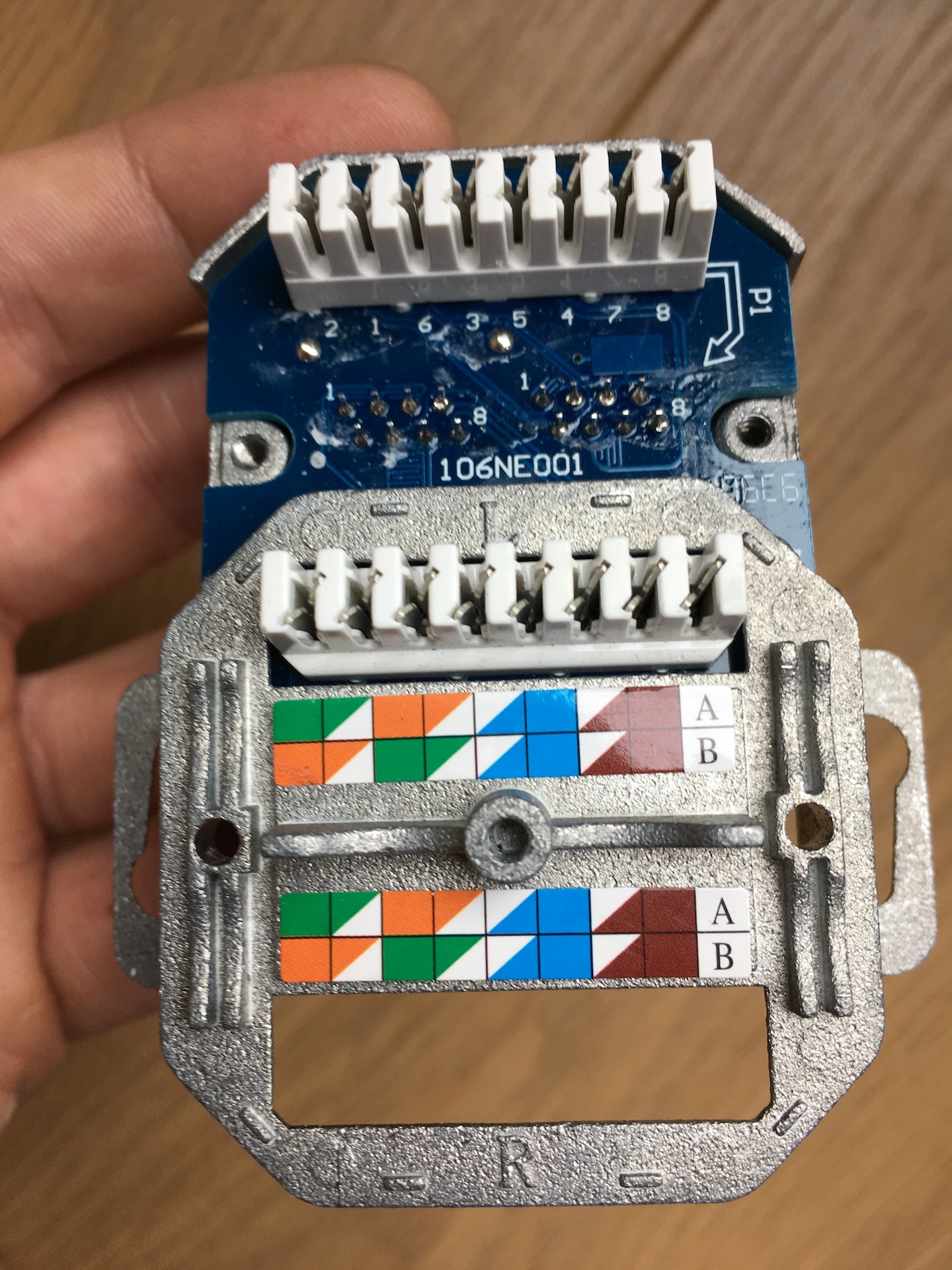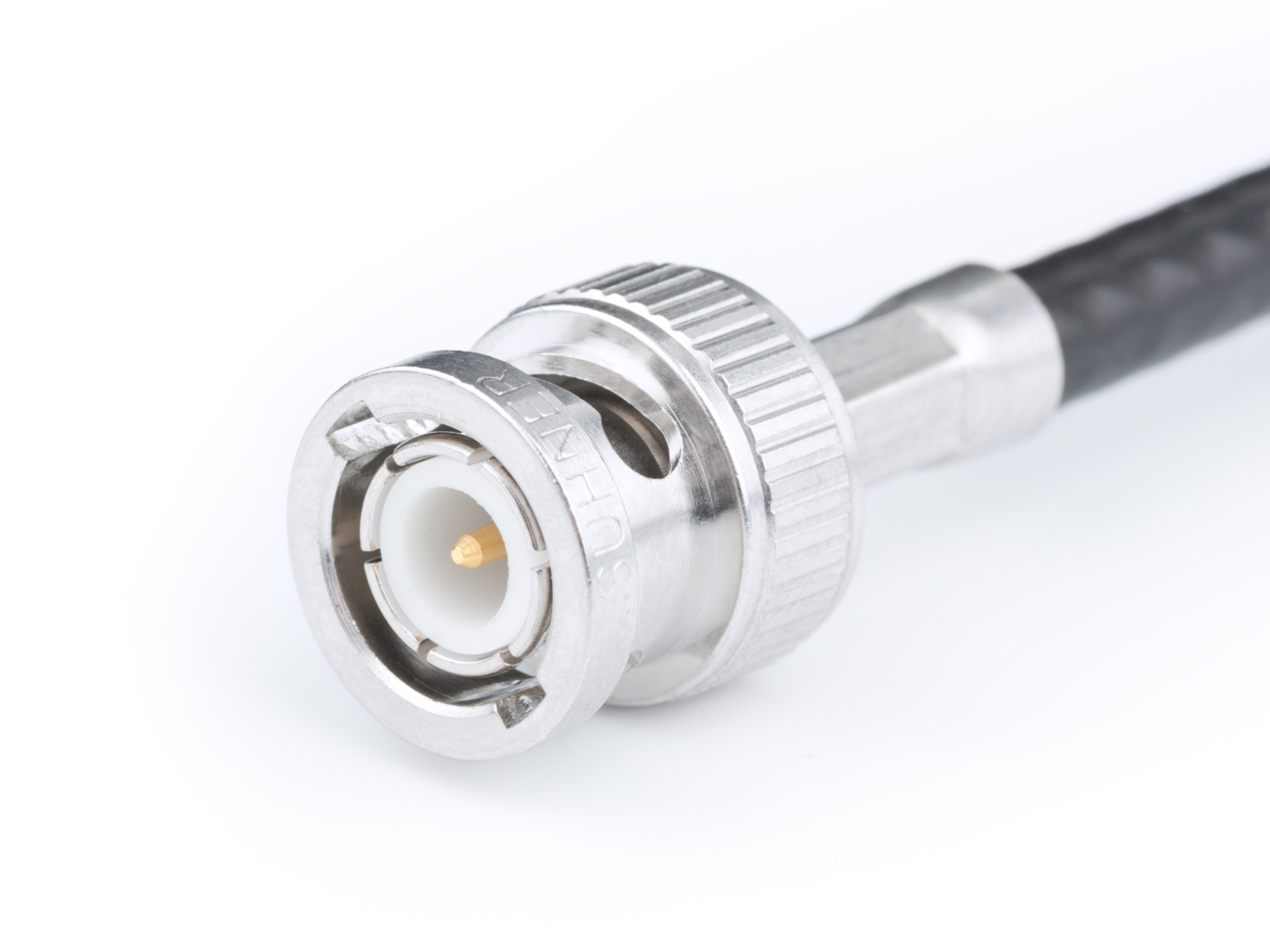|
Patch Cable
A patch cable, patch cord or patch lead is an electrical or optical cable used to connect ("patch in") one electronic or optical device to another for signal routing. Devices of different types (e.g., a switch connected to a computer, or a switch to a router) are connected with patch cords. Patch cords are usually produced in many different colors so as to be easily distinguishable from each other. Types of patch cords include microphone cables, fiber optic spectroscopy cables, headphone extension cables, XLR connector, Tiny Telephone (TT) connector, RCA connector and ¼" TRS phone connector cables (as well as modular Ethernet cables), and thicker, hose-like cords ( snake cable) used to carry video or amplified signals. However, patch cords typically refer only to short cords used with patch panels. The term "patch" came from early use in telephony and radio studios, where extra equipment kept on standby could be temporarily substituted for failed devices. This rec ... [...More Info...] [...Related Items...] OR: [Wikipedia] [Google] [Baidu] |
Attenuation
In physics, attenuation (in some contexts, extinction) is the gradual loss of flux intensity through a medium. For instance, dark glasses attenuate sunlight, lead attenuates X-rays, and water and air attenuate both light and sound at variable attenuation rates. Hearing protectors help reduce acoustic flux from flowing into the ears. This phenomenon is called acoustic attenuation and is measured in decibels (dBs). In electrical engineering and telecommunications, attenuation affects the propagation of waves and signals in electrical circuits, in optical fibers, and in air. Electrical attenuators and optical attenuators are commonly manufactured components in this field. Background In many cases, attenuation is an exponential function of the path length through the medium. In optics and in chemical spectroscopy, this is known as the Beer–Lambert law. In engineering, attenuation is usually measured in units of decibels per unit length of medium (dB/cm, dB/km, ... [...More Info...] [...Related Items...] OR: [Wikipedia] [Google] [Baidu] |
Ethernet Crossover Cable
An Ethernet crossover cable is a crossover cable for Ethernet used to connect computing devices together directly. It is most often used to connect two devices of the same type, e.g. two computers (via their network interface controllers) or two switches to each other. By contrast, ''straight through'' patch cables are used to connect devices of ''different types'', such as a computer to a network switch. Intentionally crossed wiring in the crossover cable connects the transmit signals at one end to the receive signals at the other end. Many network devices today support auto MDI-X (aka "auto crossover") capability, wherein a patch cable can be used in place of a crossover cable, or vice versa, and the receive and transmit signals are reconfigured automatically within the device to yield a working connection. Motivation The 10BASE-T and 100BASE-TX Ethernet standards use one wire pair for transmission in each direction. This requires that the transmit pair of each device b ... [...More Info...] [...Related Items...] OR: [Wikipedia] [Google] [Baidu] |
ANSI/TIA-568
ANSI/TIA-568 is a technical standard for commercial building cabling for telecommunications products and services. The title of the standard is ''Commercial Building Telecommunications Cabling Standard'' and is published by the Telecommunications Industry Association (TIA), a body accredited by the American National Standards Institute (ANSI). , the revision status of the standard is ''ANSI/TIA-568-D'', published 2015, which replaced TIA/EIA-568-C of 2009, revision B of 2001, and revision A of 1995, and the initial issue of 1991, which are now obsolete. Perhaps the best-known features of ANSI/TIA-568 are the pin and pair assignments for eight-conductor 100-ohm balanced twisted pair cabling. These assignments are named ''T568A'' and ''T568B''. History ANSI/TIA-568 was developed through the efforts of more than 60 contributing organizations including manufacturers, end-users, and consultants. Work on the standard began with the Electronic Industries Alliance (EIA), to define st ... [...More Info...] [...Related Items...] OR: [Wikipedia] [Google] [Baidu] |
8P8C
A modular connector is a type of electrical connector for cords and cables of electronic devices and appliances, such as in computer networking, telecommunication equipment, and audio headsets. Modular connectors were originally developed for use on specific Bell System telephone sets in the 1960s, and similar types found use for simple interconnection of customer-provided telephone subscriber premises equipment to the telephone network. The Federal Communications Commission (FCC) mandated in 1976 an interface registration system, in which they became known as registered jacks. The convenience of prior existence for designers and ease of use led to a proliferation of modular connectors for many other applications. Many applications that originally used bulkier, more expensive connectors have converted to modular connectors. Probably the best-known applications of modular connectors are for telephone and Ethernet. Accordingly, various electronic interface specifications exi ... [...More Info...] [...Related Items...] OR: [Wikipedia] [Google] [Baidu] |
Category 6 Cable
Category 6 cable (Cat 6) is a standardized twisted pair cable for Ethernet and other network physical layers that is backward compatible with the Category 5/5e and Category 3 cable standards. Cat 6 must meet more stringent specifications for crosstalk and system noise than Cat 5 and Cat 5e. The cable standard specifies performance of up to 250 MHz, compared to 100 MHz for Cat 5 and Cat 5e. Whereas Category 6 cable has a reduced maximum length of when used for 10GBASE-T, Category 6A cable is characterized to 500 MHz and has improved alien crosstalk characteristics, allowing 10GBASE-T to be run for the same maximum distance as previous Ethernet variants. History Cat 6, an unshielded twisted-pair (UTP) design, emerged as an advancement of the UTP Cat 5e, and was formalised in 2001. The design of Cat 6 required more stringent precision in manufacturing, and this enabled reduced noise and crosstalk, ... [...More Info...] [...Related Items...] OR: [Wikipedia] [Google] [Baidu] |
Category 5 Cable
Category 5 cable (Cat 5) is a twisted pair cable for computer networks. Since 2001, the variant commonly in use is the Category 5e specification (Cat 5e). The cable standard provides performance of up to 100 MHz and is suitable for most varieties of Ethernet over twisted pair up to 2.5GBASE-T but more commonly runs at (Gigabit Ethernet) speeds. Cat 5 is also used to carry other signals such as telephone and video. This cable is commonly connected using punch-down blocks and modular connectors. Most Category 5 cables are unshielded, relying on the balanced line twisted pair design and differential signaling for noise rejection. Standards The specification for category 5 cable is defined in ISO/IEC 11801, IEC 61156 and EN 50173. The specification for category 5 cable was defined in ANSI/ TIA/EIA-568-A, with clarification in TSB-95. These documents specify performance characteristics and test requirements for frequencie ... [...More Info...] [...Related Items...] OR: [Wikipedia] [Google] [Baidu] |
BNC Connector
The BNC connector (initialism of "Bayonet Neill–Concelman") is a miniature quick connect/disconnect radio frequency connector used for coaxial cable. It is designed to maintain the same characteristic impedance of the cable, with 50 ohm and 75 ohm types being made. It is usually applied for video and radio frequency connections up to about 2 GHz and up to 500 volts. The connector has a twist to lock design with two lugs in the female portion of the connector engaging a slot in the shell of the male portion. The type was introduced on military radio equipment in the 1940s and has since become widely applied in radio systems, and is a common type of video connector. Similar radio-frequency connectors differ in dimensions and attachment features, and may allow for higher voltages, higher frequencies, or three-wire connections. Description The BNC connector features two bayonet lugs on the female connector; mating is fully achieved with a quarter turn of the coupling nut. It us ... [...More Info...] [...Related Items...] OR: [Wikipedia] [Google] [Baidu] |
Pin Plug
A banana connector (commonly banana plug for the male, banana socket or banana jack for the female) is a single-wire (one conductor) electrical connector used for joining wires to equipment. The term 4 mm connector is also used, especially in Europe, although not all banana connectors will mate with 4 mm parts, and 2 mm banana connectors exist. Various styles of banana plug contacts exist, all based on the concept of spring metal applying outward force into the unsprung cylindrical jack to produce a snug fit with good electrical conductivity. Common types include: a solid pin split lengthwise and splayed slightly, a tip of four leaf springs, a cylinder with a single leaf spring on one side, a bundle of stiff wire, a central pin surrounded by a multiple-slit cylinder with a central bulge, or simple sheet spring metal rolled into a nearly complete cylinder. The plugs are frequently used to terminate patch cords for electronic test equipment such as laboratory powe ... [...More Info...] [...Related Items...] OR: [Wikipedia] [Google] [Baidu] |
Banana Connector
A banana connector (commonly banana plug for the male, banana socket or banana jack for the female) is a single-wire (one conductor) electrical connector used for joining wires to equipment. The term 4 mm connector is also used, especially in Europe, although not all banana connectors will mate with 4 mm parts, and 2 mm banana connectors exist. Various styles of banana plug contacts exist, all based on the concept of spring metal applying outward force into the unsprung cylindrical jack to produce a snug fit with good electrical conductivity. Common types include: a solid pin split lengthwise and splayed slightly, a tip of four leaf springs, a cylinder with a single leaf spring on one side, a bundle of stiff wire, a central pin surrounded by a multiple-slit cylinder with a central bulge, or simple sheet spring metal rolled into a nearly complete cylinder. The plugs are frequently used to terminate patch cords for electronic test equipment such as laboratory powe ... [...More Info...] [...Related Items...] OR: [Wikipedia] [Google] [Baidu] |
Electrical Conductor
In physics and electrical engineering, a conductor is an object or type of material that allows the flow of charge (electric current) in one or more directions. Materials made of metal are common electrical conductors. Electric current is generated by the flow of negatively charged electrons, positively charged holes, and positive or negative ions in some cases. In order for current to flow within a closed electrical circuit, it is not necessary for one charged particle to travel from the component producing the current (the current source) to those consuming it (the loads). Instead, the charged particle simply needs to nudge its neighbor a finite amount, who will nudge ''its'' neighbor, and on and on until a particle is nudged into the consumer, thus powering it. Essentially what is occurring is a long chain of momentum transfer between mobile charge carriers; the Drude model of conduction describes this process more rigorously. This momentum transfer model makes metal a ... [...More Info...] [...Related Items...] OR: [Wikipedia] [Google] [Baidu] |
Electrical Ground
In electrical engineering, ground or earth is a reference point in an electrical circuit from which voltages are measured, a common return path for electric current, or a direct physical connection to the Earth. Electrical circuits may be connected to ground for several reasons. Exposed conductive parts of electrical equipment are connected to ground, to protect users from electrical shock hazard. If internal insulation fails, dangerous voltages may appear on the exposed conductive parts. Connecting exposed parts to ground will allow circuit breakers (or RCDs) to interrupt power supply in the event of a fault. In electric power distribution systems, a protective earth (PE) conductor is an essential part of the safety provided by the earthing system. Connection to ground also limits the build-up of static electricity when handling flammable products or electrostatic-sensitive devices. In some telegraph and power transmission circuits, the ground itself can be used as one ... [...More Info...] [...Related Items...] OR: [Wikipedia] [Google] [Baidu] |










